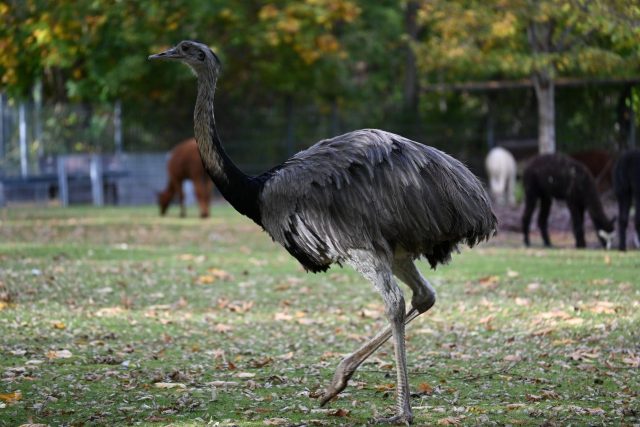Just like Christmas and Valentine’s, historical events like wars can be an inspiration for many art forms, from music to visuals. In Kenya, war has influenced the local musicians to form entertainer groups.
During World War II, Kenyan and Ugandan musicians served as entertainers in the Entertainment Unit of the King’s African Rifles. After the war, in 1946, they formed the Rhino Band, Kenya’s first popular band. One of its prominent members, George Senoga-Zake, co-composed the Kenyan National Anthem “Ee Mungu Nguvu Yetu.”
The movie “Nirgendwo in Afrika,” released in 2001, shows how war influenced Kenyan pop culture. It tells the story of German Jewish refugees in Kenya during World War II, with most scenes taking place in Kenya and actors, whether Kenyans or main German actors, speaking Swahili.
Like Kenya, Australia also felt the impact of war. In 1932, the Australian government declared war on emus, endemic flightless birds and the second-tallest living bird after the ostrich, viewing them as pests that posed a threat to farmers.
The Great Emu War
The Great Emu War started after World War I when discharged veterans were granted land by the Australian government for farming in Western Australia, particularly in challenging areas.
During the Great Depression in 1929, these veterans-turned-farmers were encouraged to boost wheat production, with the government promising subsidies that were not fulfilled.
The farmers faced more challenges when around 20,000 emus arrived for their annual migration. The emus ate and spoiled crops, creating gaps in fences that allowed rabbits to enter, causing additional issues.
Farmers asked for help, and in response, Defence Minister George Pearce sent a team of three men. Major Gwynydd Purves Wynne-Aubrey Meredith led the operation, with Sergeant S. McMurray and Gunner J. O’Halloran joining him in the field.
Due to negative media coverage suggesting minimal emu casualties, Defence Minister Pearce withdrew the military personnel and guns. After the military left, emu attacks on crops continued, leading farmers to request renewed support due to hot weather and drought, causing thousands of emus to invade farms.
In response to requests and the Base Commander’s report, the Defence Minister approved restarting military efforts by November 12.
By December 2, soldiers were killing around 100 emus per week. Meredith was recalled on December 10, reporting 986 confirmed kills with 9,860 rounds at a rate of 10 rounds per confirmed kill.
In December 1932, news of the Emu War reached the United Kingdom, where some conservationists protested the cull as the “extermination of the rare emu.” Eminent Australian ornithologists Dominic Serventy and Hubert Whittell described the war as an attempt at the mass destruction of the birds.
However, in November 1950, Hugh Leslie raised the emu issue in federal parliament, urging Army Minister Josiah Francis to release a quantity of .303 ammunition for farmers’ use. The minister approved the release of 500,000 rounds of ammunition.
In pop culture
The impact of the Great Emu War is evident in pop culture. In 2019, a musical adaptation of the story was explored in Melbourne by playwright Simeon Yialeloglou and composer James Court. Additionally, an action-comedy film titled “The Emu War” premiered at Monster Fest on October 22, 2023.
Besides movies and plays, the war is also depicted in games as part of other pop culture. Aussies vs Emus transports players back to the Great Emu War when Australian soldiers unsuccessfully attempted to control an emu population damaging crops in the Wheatbelt of Western Australia.
The game allows players to experience the challenge of being outsmarted by birds, mirroring the difficulties faced during that period. While the game can be tough, with repeated bonus attempts not always resulting in success, players can truly feel the situation when facing emus.










